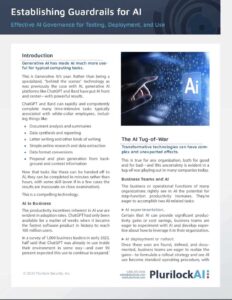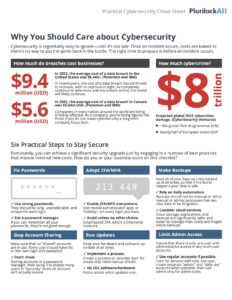In the ever-evolving landscape of cybersecurity, data breaches have become a pervasive and consequential threat. A data breach occurs when unauthorized individuals gain access to sensitive or confidential information, leading to potential misuse or exposure. As our reliance on digital platforms and interconnected systems grows, so does the importance of understanding, preventing, and mitigating the impact of data breaches. This deep dive will explore what data breaches are, why they matter, and provide an in-depth analysis of their significance in the realm of cybersecurity.
What is a Data Breach?
A data breach is a security incident where unauthorized entities gain access to sensitive data, often with the intent to exploit or misuse it. This unauthorized access can occur through various means, such as hacking, phishing, malware attacks, or even insider threats. The compromised data can include personal information, financial records, intellectual property, or any other information that holds value to individuals or organizations.
Types of Data Breaches
- Phishing Attacks: In a phishing attack, cybercriminals use deceptive emails, messages, or websites to trick individuals into providing sensitive information such as passwords or financial details.
- Malware Infections: Malicious software, or malware, can be used to infiltrate systems and exfiltrate sensitive data. Ransomware, a type of malware, encrypts data and demands payment for its release.
- Insider Threats: Employees or individuals with internal access to an organization’s systems may intentionally or unintentionally cause a data breach. This could be due to negligence, lack of awareness, or malicious intent.
- Third-Party Breaches: Organizations often share data with third-party vendors or partners. If these entities have weak security measures, it can lead to a breach that affects multiple organizations.
- Advanced Persistent Threats (APTs): APTs involve sophisticated, long-term attacks by well-funded and highly skilled adversaries. These attacks are often state-sponsored and target specific organizations for espionage or data theft.
Why Data Breaches Matter
- Privacy Concerns
Privacy is a fundamental right, and data breaches compromise this right on a massive scale. Personal information, including names, addresses, social security numbers, and medical records, can be exposed. This not only violates the privacy of individuals but can also lead to identity theft, financial fraud, and other forms of exploitation.
- Financial Implications
Data breaches have significant financial consequences for both individuals and organizations. For individuals, the aftermath may involve unauthorized transactions, credit card fraud, or even the loss of savings. Organizations, on the other hand, face substantial costs related to incident response, legal actions, regulatory fines, and reputational damage.
- Reputational Damage
The trust that individuals and customers place in organizations is crucial. When a data breach occurs, it erodes this trust and damages the reputation of the affected entity. Consumers are likely to lose confidence in organizations that fail to secure their data, leading to a decline in customer loyalty and potential business losses.
- Regulatory Compliance
Governments and regulatory bodies worldwide have implemented strict data protection laws and regulations. Organizations that fail to comply with these regulations face legal consequences and hefty fines. For instance, the General Data Protection Regulation (GDPR) in the European Union imposes severe penalties for mishandling personal data.
- Intellectual Property Theft
Data breaches can expose proprietary information and trade secrets, leading to intellectual property theft. This not only affects the organization’s competitive advantage but can also have broader economic implications if stolen information is used by competitors or sold on the black market.
- National Security Threats
In cases of state-sponsored cyber-attacks or industrial espionage, data breaches can pose significant national security threats. The theft of sensitive government or defense-related information can compromise a nation’s security posture, making it crucial to address and prevent such incidents.
In-Depth Analysis of Data Breach Significance
- Cybersecurity Maturity and Resilience
The occurrence of data breaches highlights the need for organizations to continuously assess and enhance their cybersecurity maturity and resilience. A mature cybersecurity posture involves proactive measures such as regular security audits, vulnerability assessments, and the implementation of robust security controls. Organizations must also develop and test incident response plans to efficiently manage and mitigate the impact of a potential data breach.
- Cybersecurity Awareness and Training
Human error remains a significant factor in data breaches, with phishing attacks being a prevalent vector. Organizations must prioritize cybersecurity awareness and training programs to educate employees about the latest threats and best practices for maintaining a secure environment. A well-informed workforce can serve as a crucial line of defense against social engineering tactics used by cybercriminals.
- Collaboration and Information Sharing
The interconnected nature of the digital landscape necessitates collaboration and information sharing among organizations, industry sectors, and government agencies. Threat intelligence sharing allows entities to stay informed about emerging cyber threats and adopt proactive measures to defend against potential attacks. Collaborative efforts strengthen the collective cybersecurity defense, making it more challenging for adversaries to succeed.
- Technological Innovations and Threat Evolution
As organizations adopt advanced technologies such as artificial intelligence (AI) and machine learning (ML) for cybersecurity, adversaries also evolve their tactics. Understanding the threat landscape and staying ahead of emerging cyber threats require a continuous commitment to technological innovation. Adaptive security measures that leverage AI and ML can enhance the ability to detect and respond to evolving attack techniques.
- Legal and Regulatory Landscape
The legal and regulatory landscape plays a pivotal role in shaping cybersecurity practices. Governments worldwide are enacting and enforcing stringent data protection laws to safeguard individuals’ privacy and ensure organizations uphold cybersecurity standards. Organizations must stay abreast of these regulations, implement compliance measures, and regularly update their security protocols to meet evolving legal requirements.
- Supply Chain Security
Data breaches often exploit vulnerabilities within an organization’s supply chain. Cybercriminals target third-party vendors or partners as potential entry points to access valuable data. Strengthening supply chain security involves thorough vetting of third-party security practices, contractual obligations regarding data protection, and ongoing monitoring to detect and address any security lapses promptly.
- Incident Response and Crisis Management
Effective incident response and crisis management are critical components of cybersecurity resilience. Organizations need well-defined incident response plans that outline the steps to be taken in the event of a data breach. Regularly conducting simulated exercises and drills can help ensure that the response team is well-prepared to handle a real-time incident, minimizing the impact and reducing recovery time.
- Global Cooperation Against Cyber Threats
Cyber threats transcend borders, making global cooperation essential for addressing the challenges posed by data breaches. International collaboration among governments, law enforcement agencies, and cybersecurity experts facilitates the sharing of threat intelligence, the pursuit of cybercriminals, and the development of standardized cybersecurity practices. Initiatives such as the Budapest Convention on Cybercrime exemplify the importance of a united front against cyber threats.
Conclusion
Data breaches in cybersecurity represent a multifaceted challenge that extends beyond technical vulnerabilities. They involve issues of privacy, financial security, reputation, and, in some cases, national security. The increasing frequency and sophistication of data breaches underscore the imperative for organizations and individuals to prioritize cybersecurity measures. The deep dive into data breaches highlights the interconnectedness of various factors, from technological innovations to legal frameworks, that contribute to the overall cybersecurity landscape.
To effectively combat the threat of data breaches, a holistic approach is essential. This includes fostering a cybersecurity culture, investing in advanced technologies, collaborating with industry peers and government agencies, and staying compliant with evolving regulations. As we navigate the complex terrain of cybersecurity, the lessons learned from data breaches serve as valuable insights that propel us toward a more secure and resilient digital future.














